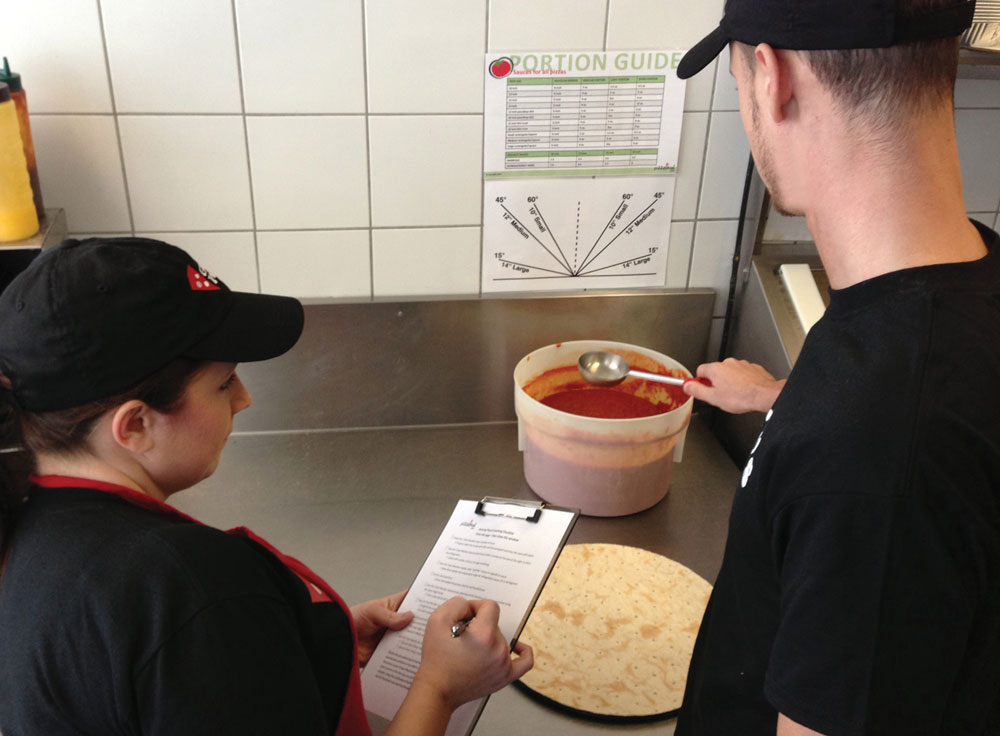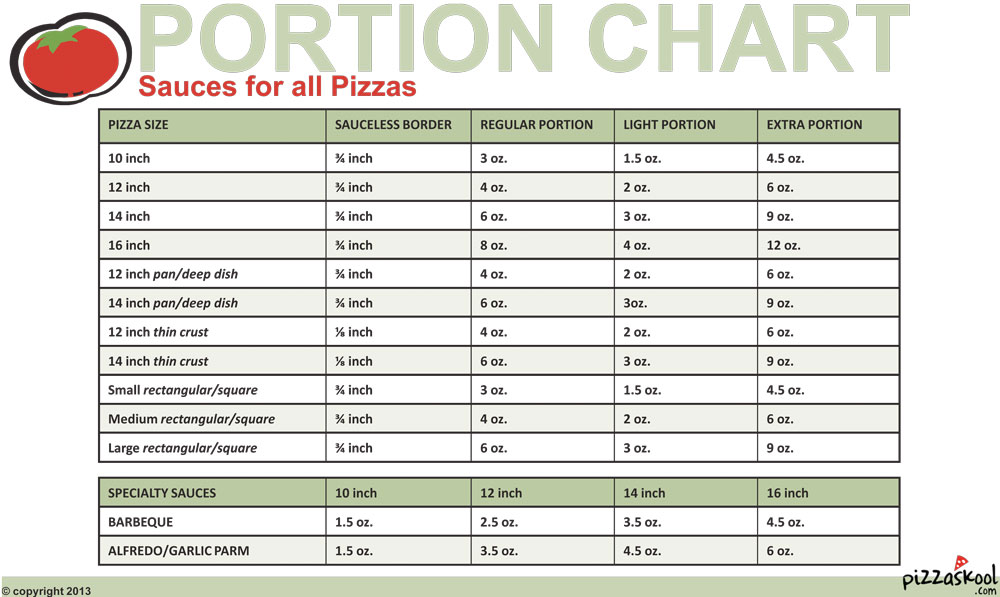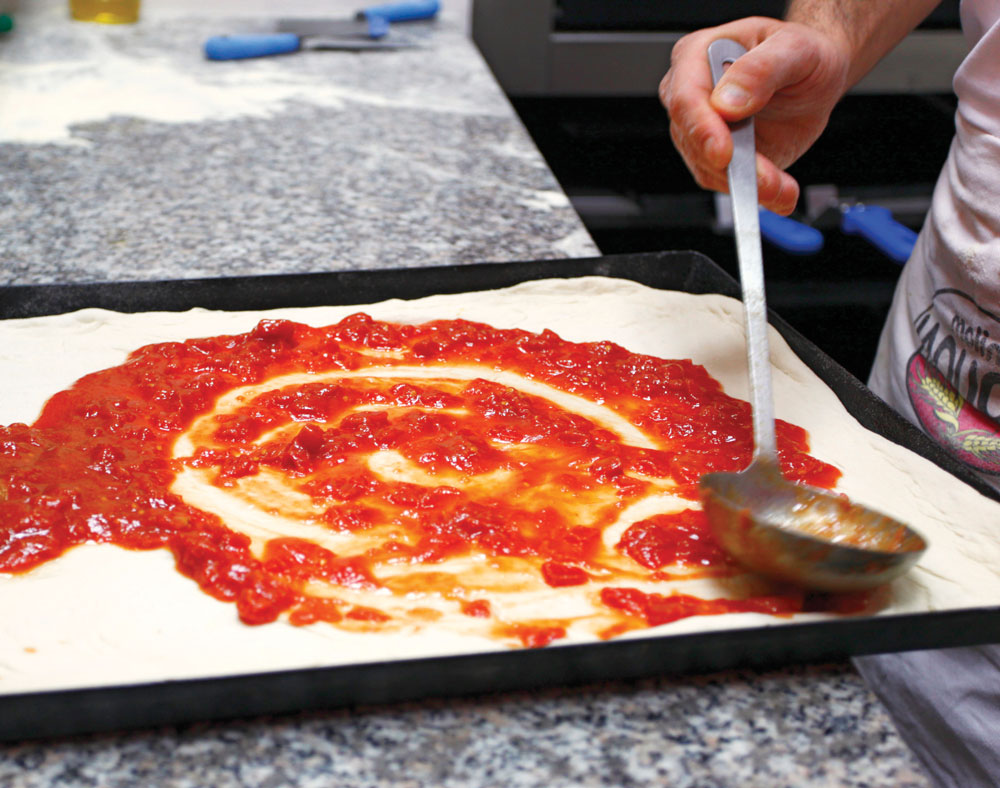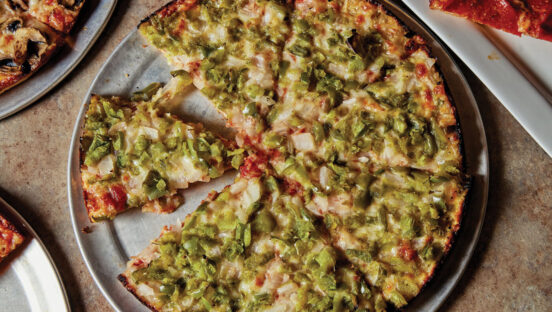By Dan Risner
Like the temperature of porridge in the Three Bears’ house, the amount of sauce on your pizza needs to be “just right.” To some extent, of course, this Goldilocks portion is a matter of personal taste, so different pizza makers have varying definitions of “just right.” But the common thread is—or should be—consistency.
Teaching your employees to apply sauce in a consistent manner—for every single pizza made in your kitchen every day—is paramount. Many operators use the spoodle, a flat-bottom ladle that lets you portion out the sauce and spread it evenly over the pizza dough. Others start out using a scale until they learn what each portion of sauce should look like. Unfortunately, many will soon quit using the scale and try to sauce by eye instead. This isn’t a good idea, since it often leads to mistakes.

Fortunately, there is a highly effective method for acquiring the right amount of sauce every time without using a scale. It all starts with the right spoodle size and a method called “saucing by angles.” It has been determined that, when ladling out sauce with a three-ounce spoodle, the angle at which you insert and remove the spoodle will produce the same amount of sauce each and every time.
Looking for a way to make your menu items really pop? Click here for some drizzlicious ideas using flavored oils!
Let’s say your sauce portion for a small pizza is three ounces. Dipping a three-ounce spoodle into and out of the sauce bucket at a 60° angle will produce this desired amount. Four ounces of sauce for a 12” pizza calls for a 45° angle. Six ounces for a 14” pizza requires a 15° angle (resulting in a heaping spoodle), and eight ounces calls for using a 45° angle twice. Using a scale to test this method proves it to be accurate. (If your pizzeria uses different portions of sauce than listed above, you would simply adjust the degree of the angles to fit.)
Spreading the sauce around the dough calls for a little finesse. Keeping the spoodle flat and without pushing down, the pizza maker should work the sauce to the outside edge, using a spiral motion. With experience, a person can sauce a medium pizza in just two to three spirals around the crust. He should strive to leave the desired sauceless border while spreading the sauce consistently across the crust, without leaving any bare spots or large ridges of sauce.

There is no perfect solution for the problem of sauce portioning and consistency. Using a scale yields better accuracy, but it takes more time. Saucing by angles isn’t quite as precise as the scale method, but it’s faster and frees up the scale for weighing more expensive food items. Whatever method you use, we recommend developing a system by which your trainers can rate a new employee’s pizza saucing abilities and provide feedback. This will take a little extra time in the early stages of the employee’s training, but it will ensure that the fledgling pizza maker recognizes and learns from his own mistakes, ultimately leading to increased efficiency in the long run.
To learn more about saucing a pizza, read the full version of this article that originally appeared in the August 2013 edition of PMQ Pizza Magazine.
About the author: Dan Risner is president of PizzaSkool (pizzaskool.com), a fully hosted, e-learning solution for all pizzeria employees’ training needs. PizzaSkool’s video-based program provides training, testing and certification for driver, order taker, pizza maker and manager-in-training positions. Training courses cover customer service in the store and at the door, upselling and all aspects of pizza-making and safe delivery.















